There are millions of fish species in both ocean and freshwater. All of them have separate biological or anatomical characteristics. Having sharp teeth is one of them. In this article, I will discuss the 18 fish with sharp teeth.
18 Fish with Sharp Teeth [At a Glance]
Before you know the detail have a look at the chart.
| Fish Name | Interesting Facts |
| Alligator Gar | They have a double row of sharp teeth in their upper jaw and a single row of teeth in their lower jaw |
| Amberjack | They are known for their speed and strength, making them popular among sport fishermen |
| Angler fish | Females have a bioluminescent lure on their head to attract prey, and some species have males that fuse to them |
| Barracuda | They can swim up to 36 miles per hour and have a reputation for being aggressive towards humans |
| Bluefish | They are highly migratory and can be found in both saltwater and freshwater |
| Bowfin | They have the ability to breathe air and can survive in oxygen-poor environments |
| Deep sea dragonfish | They have photophores that produce red light to help them blend in with the dim red light of the deep sea |
| Deep sea fangtooth | They have enormous, protruding fangs and feed on smaller fish, crustaceans, larger fish, and even squids |
| Goliath Tigerfish | They are one of the largest freshwater fish in the world and have been known to attack humans |
| King Mackerel | They are fast-swimming predators that are highly sought after by sport fishermen |
| Lingcod | They are a popular game fish with a mild, sweet flavor and firm texture |
| Needlefish | They have long, narrow beaks that they use to impale prey, and can leap out of the water to escape predators |
| Northern Pike | They are ambush predators that lie in wait for prey and can grow up to 4 feet long |
| Payara | They have long, sharp teeth that they use to impale prey, and are popular among sport fishermen |
| Piranha | They have sharp teeth and a reputation for being aggressive towards humans, but usually feed on other fish |
| Sharks | They have a variety of adaptations that make them efficient predators, such as electroreception and sharp teeth |
| Wolffish | They have powerful jaws and teeth that they use to crush the shells of their prey |
| Yellowtail | They are a popular game fish that are prized for their flavor and fighting ability |
Let’s know the detail.
Alligator Gar
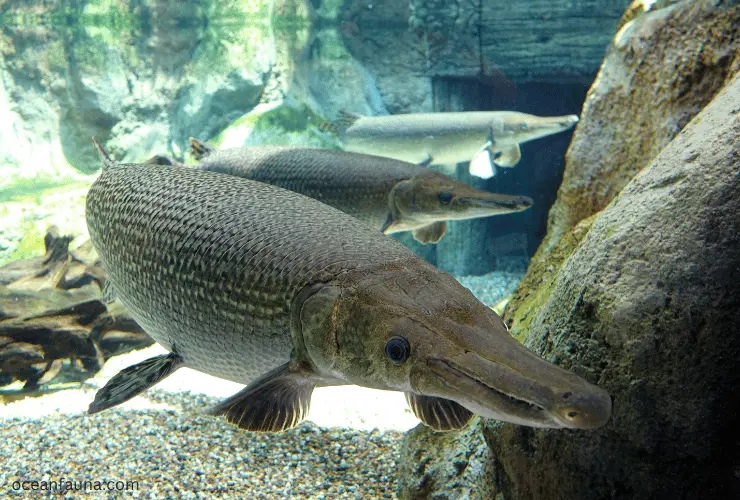
The Alligator Gar (Atractosteus spatula) is a species of fish known for its unique and intimidating appearance, especially in its teeth. The Alligator Gar’s teeth are long and sharp, with a row of sharp teeth lining each side of the upper and lower jaw.
These teeth are incredibly powerful and can easily tear through the tough skin of their prey. In fact, the Alligator Gar’s teeth are so strong that they can even penetrate through bone. Their ability to quickly and efficiently devour prey is a testament to their highly evolved hunting skills.
The Alligator Gar’s teeth continue to grow throughout its entire life. This means that their teeth become longer and sharper as they age, allowing them to become even more effective hunters.
Despite their fearsome appearance, Alligator Gars are actually quite beneficial for their ecosystem. They are carnivores that primarily feed on other fish and can help control invasive fish species’ populations in their habitat.
Amberjack

The Amberjack, scientifically known as Seriola dumerili, is a popular game fish found in the warmer waters of the Atlantic Ocean and the Mediterranean Sea. One of the fascinating features of the Amberjack is its unique teeth structure, which is essential for its predatory behavior.
Amberjack possesses a set of sharp and robust teeth designed to tear through their prey with ease. These teeth are differentiated into incisors, canines, and molars, providing maximum efficiency and precision during feeding.
These teeth are not stationary, and they can move in and out of the jaw, enabling the fish to adjust their grip on the prey or even release it if necessary.
Another remarkable feature of the Amberjack’s teeth is their ability to regenerate. Amberjacks have multiple sets of teeth behind the primary row, and if they lose a tooth, a new one will replace it within a short period. This enables them to maintain their ruthless predatory behavior continuously.
Angler Fish
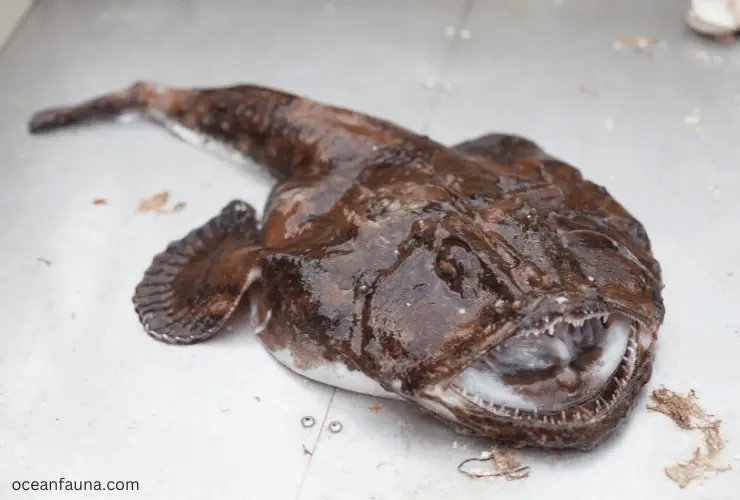
The Angler fish (Lophiiformes) possess distinctive features. They are popular for their predatory habits, using a glowing body part called an esca to attract prey. Additionally, they have unique teeth that assist them in catching and consuming their prey.
Angler fish have numerous rows of pointed, needle-like teeth lining their jaws. These teeth are designed to lock onto prey, preventing them from escaping, and are angled inward towards the throat to make it difficult for prey to wriggle free.
In addition to their sharp and durable teeth, angler fish also possess an expandable stomach that allows them to swallow prey that is up to twice their own size.
Male angler fish have evolved a unique method for mating – they use their teeth to attach themselves to females. Notably, males have smaller bodies than females and lack a light-producing esca.
Instead, they use their sharp teeth to attach themselves to the female and fuse their circulatory systems together, essentially becoming parasitic. This allows the male to receive nutrients from the female and ensures they are always close by when the female is ready to mate.
Barracuda
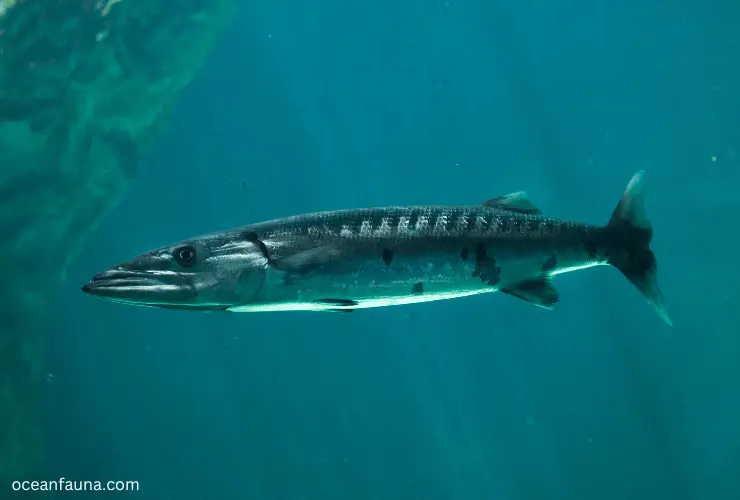
The Barracuda (Sphyraena) is a predatory fish that is well-known for its impressive set of teeth. In fact, Barracudas have some of the most fearsome teeth in the animal kingdom. Their teeth are long, sharp, and pointed, resembling miniature daggers, which they use to capture and hold their prey.
Barracudas have two rows of teeth in their mouth, with each row containing around 20 to 30 needle-like teeth that are serrated on both sides. These teeth are constantly growing and being replaced as they become worn or broken, ensuring that the Barracuda always has a fresh set of teeth ready to go.
Barracudas do not chew their food like humans do. Instead, they use their teeth to grip and hold onto their prey before swallowing it whole. Their teeth are so sharp and powerful that they can bite through their prey’s tough scales and skin, making it easier for them to swallow their meal.
Barracudas’ teeth are used for more than just hunting and eating. They also have a role in social behavior. In territorial disputes, male Barracudas use their teeth to intimidate other males, while females show their teeth as a sign of aggression or as a warning to predators.
Bluefish
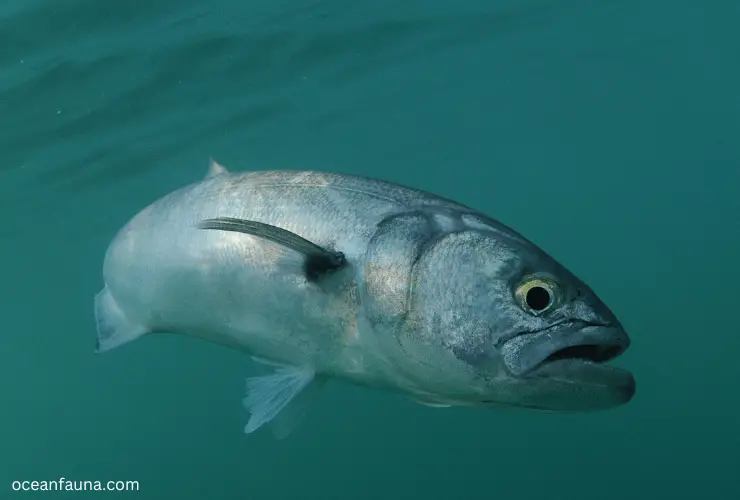
The Bluefish, also known as Pomatomus saltatrix, is a strong hunter with sharp teeth. Its teeth are specifically designed to catch and eat various types of prey, such as small fish, squid, crustaceans, and other invertebrates.
The teeth of the Bluefish are arranged in multiple rows along both the upper and lower jaws, with the front rows being larger and more prominent than the rear ones. The teeth themselves are pointed and curved backward, making them perfect for grabbing and holding onto prey.
The Bluefish has self-sharpening teeth, which are made of two layers. The outer layer is made of a hard material called fluorapatite that is more resistant to wear and tear. As the outer layer wears down from use, the sharp inner layer is revealed, ensuring the Bluefish’s teeth remain sharp.
Bowfin
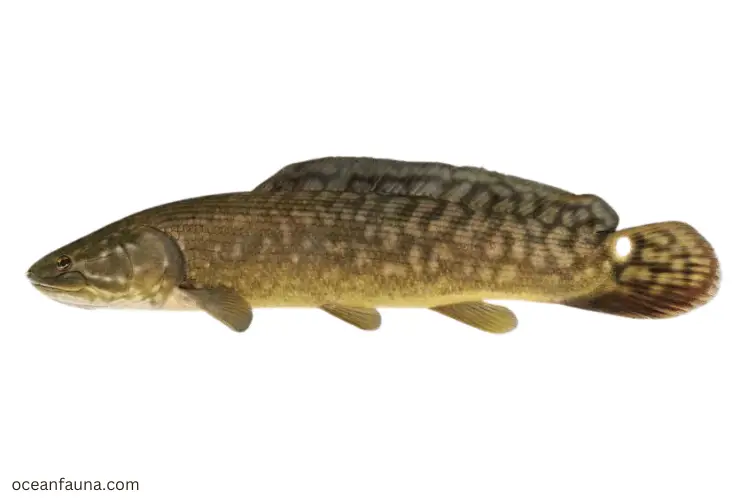
The Bowfin, scientifically known as Amia calva, is a freshwater fish found mostly in North America. One of the fascinating features of this fish is its unique set of teeth. These teeth are conical, which means they are pointed and cone-shaped and are arranged in several rows.
The Bowfin has a set of crushing teeth in the back of its mouth and a set of sharp, piercing teeth in the front.
The teeth of the Bowfin are incredibly strong and durable, allowing it to eat prey that other fish cannot consume. They can easily crush the shells of crayfish, snails, and other hard-skinned invertebrates.
Despite their strength, however, Bowfin’s teeth are relatively small when compared to the size of their head, with the largest teeth measuring only a few millimeters in length.
The teeth of Bowfin fish are unique because they are fused to their jawbone instead of being individually rooted like most other animals. This makes them more durable. In addition, Bowfin fish constantly replace their teeth throughout their lives, with new teeth growing in to replace the old or worn-out ones.
In terms of function, their teeth serve a dual purpose. The sharp, piercing teeth in the front of the mouth are used to grab and hold onto prey, while the crushing teeth in the back are used to pulverize and crush hard-shelled prey.
Due to their strong and versatile teeth, Bowfin is known to eat a variety of prey, including fish, insects, crustaceans, and even small mammals.
Deep Sea Dragonfish
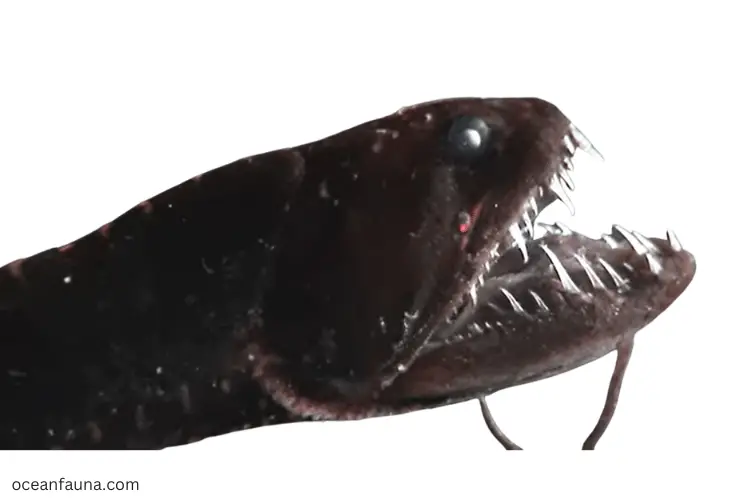
The deep sea dragonfish (Grammatostomias flagellibarba) is a type of fish that survives in the extreme conditions of the deep sea thanks to its unique physical traits. Its teeth are particularly remarkable.
These predatory fish have elongated teeth adapted to capturing prey in the ocean’s dark depths. The teeth of the deep sea dragonfish are so long and sharp that they actually protrude from their jawline when closed. These teeth are also fang-like and can resemble the teeth of a vampire.
The teeth of the deep sea dragonfish are extremely strong and can pierce through the tough hide of their prey, which often includes other fish and crustaceans. In addition to their strength, the teeth are equipped with an enzyme that helps dissolve the flesh of their prey, allowing them to digest it more easily.
The dragonfish also have the ability to fluoresce. This means that their teeth contain a protein that emits light and helps them navigate in the ocean’s dark depths. This adaptation is crucial for their survival, allowing them to hunt effectively and avoid becoming prey.
Deep Sea Fangtooth

The Deep Sea Fangtooth, also called Anoplogaster cornuta, is a scary predator living in the ocean’s cold and dark depths. Its teeth are especially striking. They are very large and intimidating even though the fish itself is usually no bigger than 18cm.
These teeth are specially adapted for catching and holding onto prey in the deep-sea environment, where food is scarce, and competition is fierce. The Fangtooth’s teeth are so large that they cannot even close their mouths all the way. This may seem like a disadvantage, but it allows them to have a better grip on their prey.
The Fangtooth’s teeth are curved and razor-sharp, ideal for tearing apart the soft flesh of squid, fish, and crustaceans. Their teeth are also highly specialized, with some of them being longer and more pointed than others, allowing them to grasp their prey more effectively.
Additionally, the teeth are reinforced with incredibly tough enamel, making them exceptionally durable.
Goliath Tigerfish
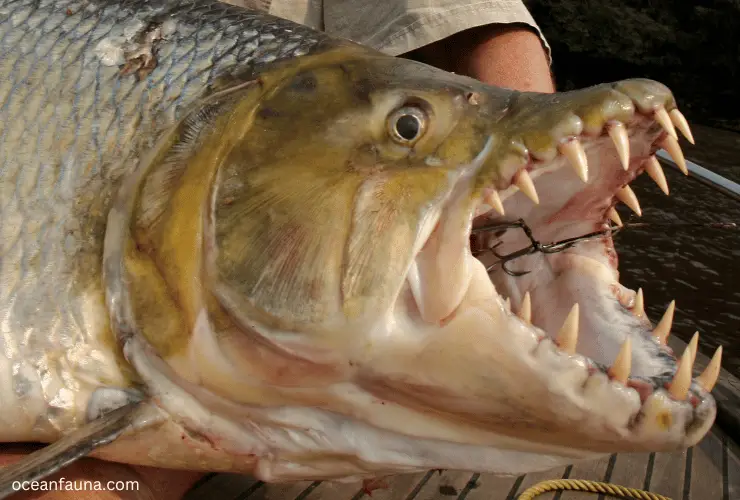
The Goliath Tigerfish, or Hydrocynus goliath, is a hunting fish that lives in the Congo River Basin in Africa. These fish have long, pointy teeth. Their teeth are strong enough to pierce through other fish’s tough scales, and they can even break fishing equipment and hooks.
The Goliath Tigerfish has teeth that are specifically designed for hunting and feeding. They have long, slender teeth at the front of their mouths that are perfect for catching prey.
Additionally, they have rows of small, sharp teeth that can easily tear flesh apart and are used for both hunting and self-defense. During mating season, they can be very aggressive and territorial, with males often battling for mates.
The Goliath Tigerfish has teeth coated with a hard layer of enamel, which helps to protect the teeth from the immense pressure and force exerted while biting its prey. These fish are known to feed on a wide range of prey, including smaller fish, insects, crustaceans, and even small hippos and crocodiles.
King Mackerel
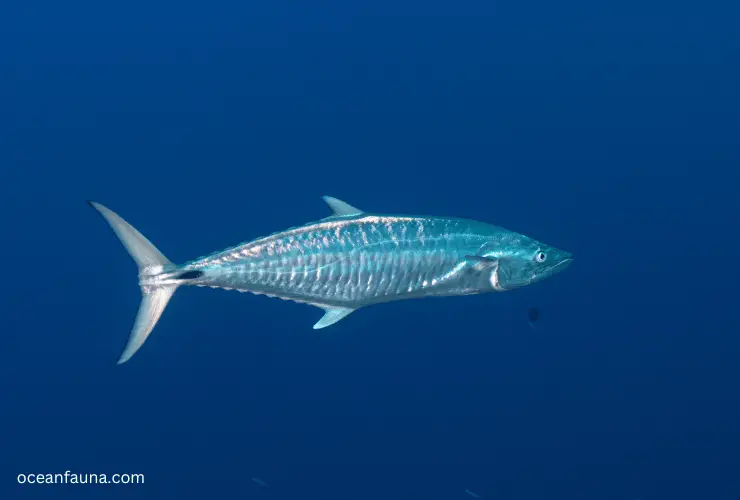
The King Mackerel, also known as Scomberomorus cavalla, is a type of predatory fish that can be frequently found in the Gulf of Mexico and along the Atlantic coast of the USA. The King Mackerel is known for its sharp teeth that are specially adapted for catching prey.
Their teeth are large, pointy, and razor-sharp, with rows of serrated edges that help the fish to grip and tear apart its prey. These teeth are positioned in a narrow, elongated mouth, enabling the King Mackerel to capture and swallow large fish whole.
Moreover, King Mackerel’s teeth have a unique structure that is different from other fish species. They have a prominent set of canines in the front of their mouth, which are designed to impale and hold onto prey at a critical moment.
It is estimated that King Mackerels have around 100 teeth at the tip of the jaw and more than 20 teeth on either side of the same jaw.
Additionally, their teeth are continually replaced throughout their life. This process of tooth renewal is essential in enabling King Mackerels to continue hunting and thriving.
Although the King Mackerel’s teeth are sharp, they can also pose a danger to humans. Handling these fish with utmost care or wearing gloves while handling them is recommended to avoid getting bitten. This fish is also considered a popular game fish, and its sharp teeth have become an iconic symbol of this popular fish species.
Lingcod
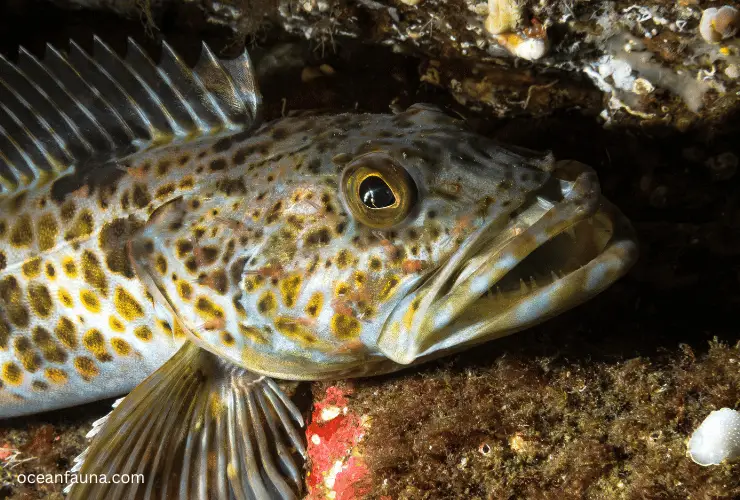
The lingcod, also known as Ophiodon elongatus, is a type of fish typically found in the North Pacific Ocean. It is highly sought after by both sport fishermen and commercial fishing industries. One of its most interesting and unique physical traits is its teeth.
Lingcod have a set of sharp and prominent conical teeth that are arranged in a row inside their jaw. These teeth are used for capturing and holding prey, mainly fish and squid. The lingcod’s teeth are continuously growing throughout their lifetime, which allows them to maintain their sharpness even after years of use.
Lingcods have two different types of teeth. One set is their visible, sharp teeth used for catching prey, while the second set of smaller teeth, called “vomerine” teeth, are located at the back of their mouth and used for grinding and crushing prey before swallowing.
Needlefish
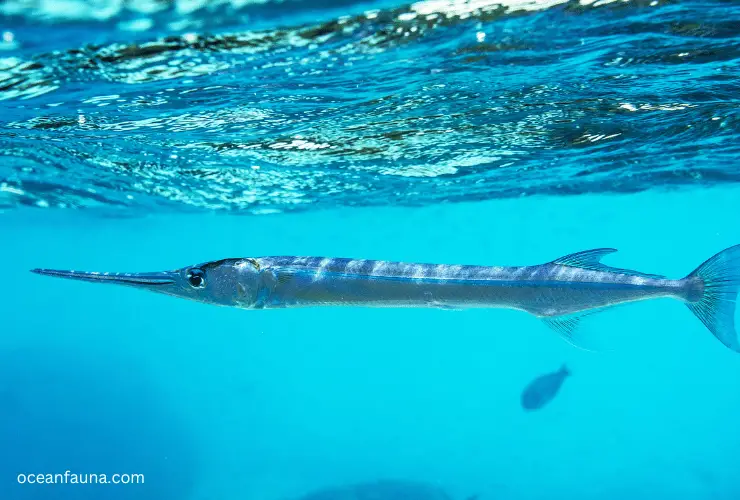
Needlefish (Belonidae) are known for their long, slender bodies and sharp, pointed beaks. However, their unique teeth structure sets them apart from other types of fish.
The Needlefish has a set of long, sharp teeth positioned in the upper jaw of its beak, adding to its already menacing appearance. These teeth are recurved and razor-sharp, designed to grasp and firmly grip their prey.
In fact, their teeth are so sharp that they can easily slice through the tough exoskeleton of crustaceans and penetrate the tough skin of smaller fish.
Another interesting fact about Needlefish teeth is that they have teeth patches that are composed of specialized cells known as melanophores. These melanophores contain dark pigments that color the teeth and make them more visible. This serves as a visual warning to potential predators, indicating that the Needlefish is not to be trifled with.
Furthermore, it is not just the shape and composition of their teeth that make them unique, but rather it is also how they use them that sets Needlefish apart. They are known to use their sharp teeth to not only shred their prey but also to hold on to them, chasing their prey down until they are exhausted before finally striking in for the kill.
Northern Pike

The Northern Pike (Esox lucius) is a predatory fish found in the northern hemisphere. Its teeth are notable – they are long, sharp, and arranged in rows that angle towards the throat. This design is effective in catching and holding onto prey.
The teeth of a Northern Pike are not fixed in place like human teeth. They are attached to a flexible mechanism that allows them to move independently. This enables the fish to adapt the position of its teeth to match the size and shape of its prey.
For instance, if the fish catches a smaller fish, it can modify its teeth to grip it more effectively and prevent it from getting away.
Northern Pike teeth are also continuously replaced throughout their lifetime. New teeth grow in behind the old ones and push them out, ensuring the fish always has sharp, functional teeth to catch prey. In fact, Northern Pike can replace up to hundreds of teeth per year.
Payara
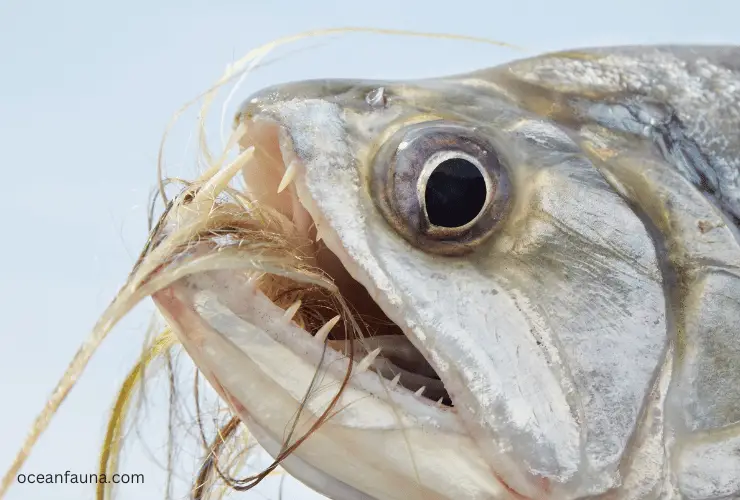
The Payara (Hydrolycus scomberoides), also known as the Vampire Fish, is a predatory freshwater fish found in the Amazon Basin. They are known for their fierce hunting skills, especially their sharp teeth that can tear through the flesh of their prey.
Payara teeth are designed for one purpose: to catch and kill prey. These fish have two long, curved, and very sharp teeth that protrude from their lower jaw, resembling vampire fangs. These teeth can be up to four inches long and can inflict serious damage.
Apart from these fangs, Payara also have a set of smaller teeth lining their jaws. These teeth are needle-like and help to grip onto their prey, ensuring that it does not escape their clutches.
Payara has two sets of teeth, one larger and one smaller. The larger set of teeth is used to impale large prey like other fish and even small mammals, while the smaller teeth are used to keep smaller prey like crustaceans and insects from slipping away.
The teeth of the Payara are made up of hard, shiny enamel, making them sharp and durable, allowing them to last for long periods. These teeth are perfectly suited to a predatory lifestyle, making the Payara one of the most efficient and effective predators in the Amazon Basin.
Piranha

The serrated teeth of the piranha are a remarkable feature that sets them apart from other fish species. These carnivorous fish are equipped with extremely sharp and powerful teeth that easily tear through their prey.
The teeth of the piranha are razor-sharp and triangular in shape, perfectly designed for slicing through flesh and bone. As such, their teeth are often compared to those of a shark, albeit on a smaller scale.
The black piranha is particularly renowned for its impressive bite force, and it’s all thanks to its teeth. These fish have rows of large teeth that are capable of crushing and grinding through almost anything in their path.
In fact, the black piranha’s bite force is so strong that it can easily take down prey that is many times its size! Its teeth are perfectly adapted for gripping and crushing, making it a true predator of the waters.
On the other hand, the red-bellied piranha is known for having the sharpest teeth of all bony fish. These teeth are needle-like and razor-sharp, perfectly adapted for ripping and tearing through prey.
Unlike the black piranha’s teeth, which are designed for crushing, the red-bellied piranha’s teeth are intended for tearing flesh. The sharpness of their teeth is a result of their diet, which consists mainly of smaller fish, crustaceans, and insects.
Shark

Sharks, which belong to the Class Chondrichthyes, are known for their sharp and powerful teeth. These teeth are specifically designed for hunting, feeding, and self-defense against potential threats. Unlike most fish, sharks have several rows of teeth, which they can lose and replace continuously throughout their lifetime.
Among all the different shark species, Tiger and Silky sharks are found to have the sharpest teeth. These teeth can measure up to 2 inches and have the ability to bite through thick flesh and bone.
However, certain shark species have larger teeth, such as the Great White Shark. These teeth can measure up to 3 inches and are triangular in shape, designed to tear off chunks of flesh from their prey.
Furthermore, shark teeth comprise a strong mineral called calcium phosphate, making them extremely durable and resistant to wear and tear. In fact, shark teeth are popular amongst collectors due to their unique shapes, sizes, and colors. Some archaeologists have even found fossilized shark teeth that date back millions of years, providing valuable insights into the evolution of these fascinating creatures.
Wolffish
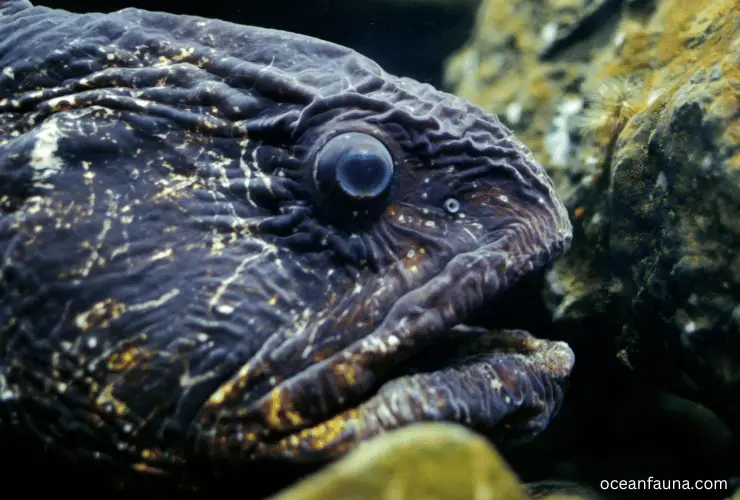
Wolffish, scientifically known as Anarhichas lupus, is a group of predatory fish that are known for their unique teeth. These fish have a powerful pair of jaws that contain sharp, cone-shaped teeth in the front and molar-like teeth at the back of their mouths.
The front teeth are used for grasping and holding onto prey, while the back teeth are used for crushing and grinding it.
These fish have teeth that continue to grow throughout their lifetime. As they grind their teeth against one another during feeding, the teeth naturally wear down and get replaced by new ones. This constant cycle of tooth replacement helps maintain the sharpness and effectiveness of the wolffish’s teeth.
Another fascinating characteristic of wolffish teeth is their ability to puncture through the skin of their prey. Their front teeth are designed to penetrate through the scales or shells of other fish or crustaceans, allowing them to get a firm grip and prevent their prey from escaping.
Yellowtail
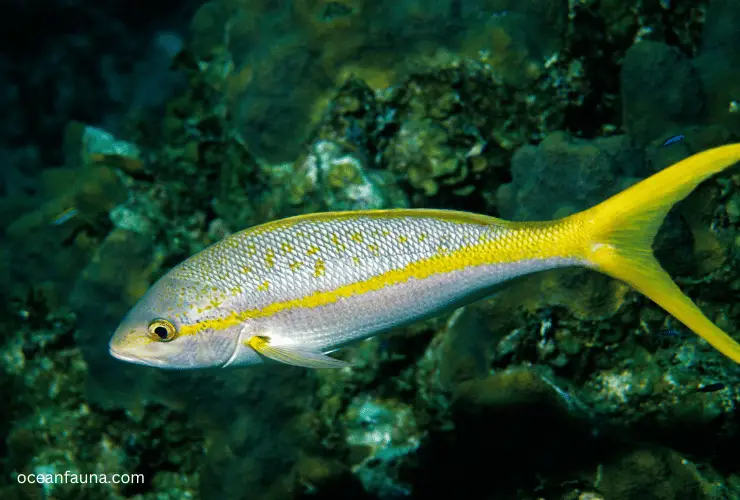
Yellowtails, also known as Seriola lalandi, are medium to large-sized fish often found in coastal waters. They are an important game fish and a popular food source, prized for their firm texture and delicate flavor. Regarding their teeth, Yellowtail has a unique set of dental structures.
Yellowtail has a number of small, sharp teeth that are used primarily for gripping and tearing prey. These teeth are located in the jaws and around the throat area and are designed to help the fish capture its food.
They also have a specialized set of teeth on their tongue. These teeth, known as pharyngeal teeth, are located further back in the mouth and are used to crush and grind up tough prey items.
The teeth of Yellowtails are specially adapted to their predatory lifestyle. They are sharp enough to pierce through the tough skin of smaller fish and crustaceans but also strong enough to withstand the struggles of larger prey.
Additionally, their pharyngeal teeth allow them to deal with prey that might be too large to swallow whole by breaking it down into smaller, more manageable pieces.
Conclusion
Hopefully, you have a detailed idea of the 18 fish species, the type of teeth they have, and how those teeth are used. All types of fish have evolved different pointed or flat teeth for various uses such as hunting, shredding food, and defense.
Understanding the various adaptations of these species can provide invaluable insights into their unique lifestyles and behaviors. If you have any further queries about these fish, let me know.


7 thoughts on “18 Amazing Fish with Sharp Teeth [with Images]”